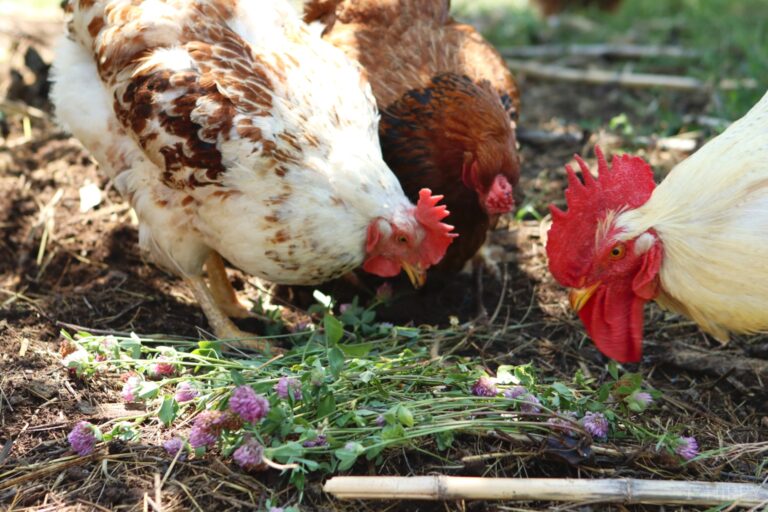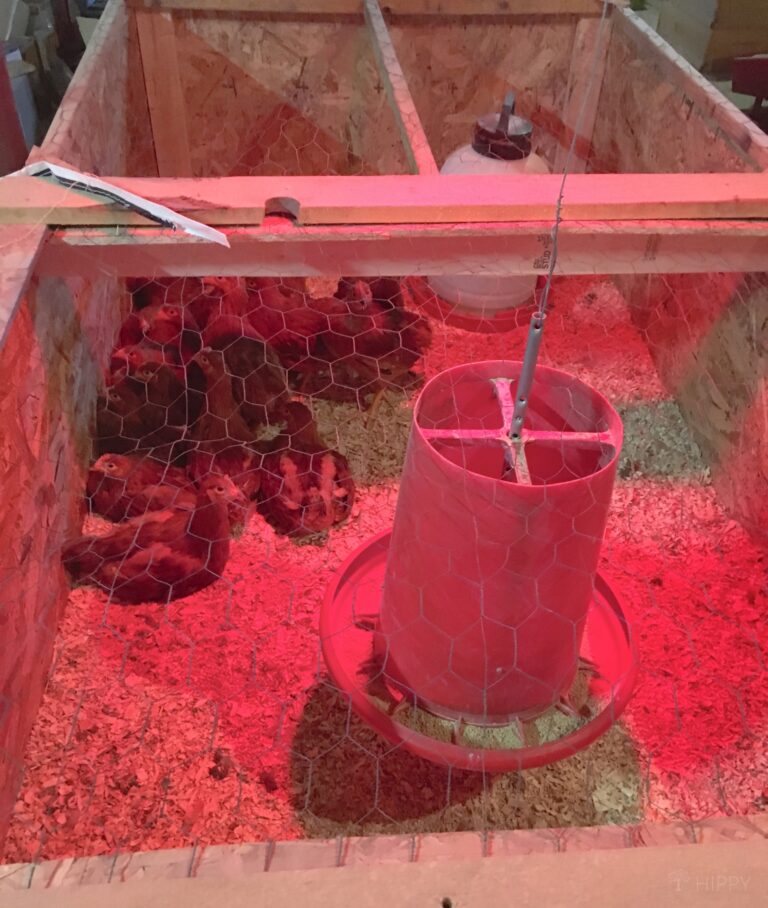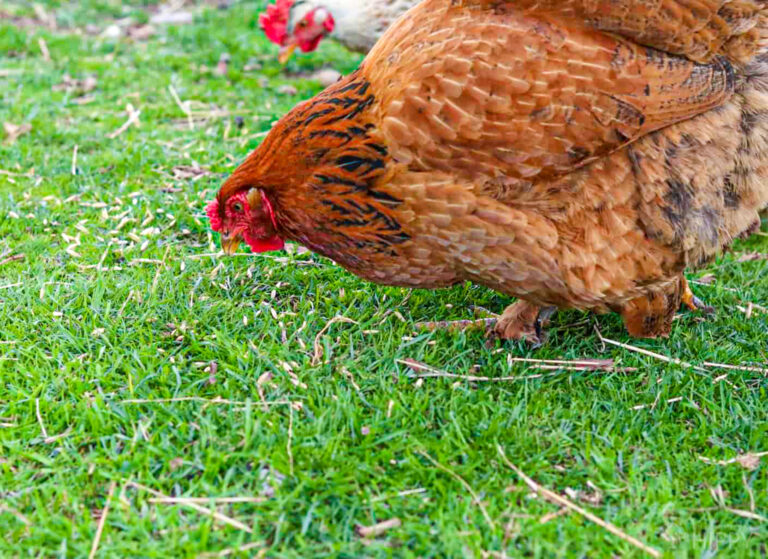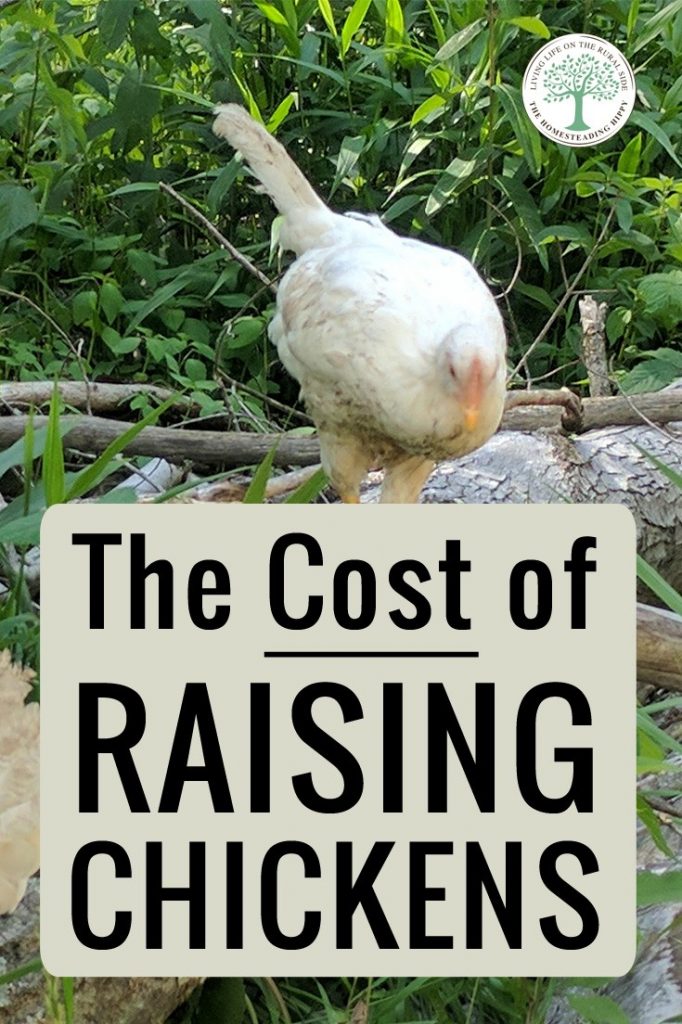Whether you want to raise chickens as pets or you’re interested in making some money with your new backyard flock, knowing the full cost of raising chickens is important for several different reasons.
Not only does having a clear idea of the costs give you a good idea of whether you’re saving or making money, but it can also give you some insight into ways you can cut expenses.

The cost of raising chickens will be different for everyone. After all, these figures will vary depending on the following:
- Where you live
- What breed of chickens you are raising
- What kind of facilities you already have built
- Other equipment you already own
- Where you source your food
Those aren’t the only factors that can impact your expenses, either. There are countless others that can cause your numbers to swing and flex in one direction or the other.
However, in general, there are several categories when it comes to chicken-raising expenses and countless ways that you can save some money. Here’s what you need to know.
Making a Chicken Budget
Before you set out on your chicken budget creation adventure, have a clear idea in mind about your reasons for doing so. Are you trying to save money? Make some money? Figure out where gaps are?
If you don’t care much about making money and simply want to provide your family with fresh, free-range eggs, then the difference between profit and loss might not be as meaningful to you. It might simply be your goal just to break even.
However, you also need to keep in mind that raising chickens isn’t always cheaper than buying eggs or meat from the grocery store. In many cases, it can even be more expensive!
When you’re calculating the cost of raising chickens, look at all the individual costs that go into it. Don’t leave anything out.
And remember, it’s important to calculate on the high side so that you’re safe (and not scrambling for cash) in case you make any mistakes.
Housing
Expense number one is housing. If you can build your own chicken coop, you might be able to save some money versus buying one at a store, which can cost several hundred to several thousand dollars.
But keep in mind that building a coop doesn’t mean free – you will still have to pay for building materials.
Expect to pay at least $100 for your chicken coop unless you are able to get one for free off Craigslist or from a generous neighbor.
Also, keep in mind that you may be able to construct your coop out of recycled materials if you’re super handy. You could use things like:
- Sheet metal
- An old hay wagon
- An old dog house
- Old boards
- Leftover fencing
- Old appliances (like washing machines)
- IBC totes
If you build a chicken coop out of repurposed materials, just make sure they don’t contain any harmful materials. Things like loose wires and rusty nails can be dangerous, too, so do your best to mitigate those hazards.
Building or buying a chicken coop is a one-time expense. If you’re not handy, it might make more sense for you to buy your coop to save some time, and it might save you money, too.
If you don’t know what you’re doing, you’re probably going to spend way more time than necessary messing around with plans and tools.
No matter which method you choose, make sure you factor in expenses for adding things like ventilation, nesting boxes, roosting areas, and a run, too.
Total Cost: $100 – $1000
Chickens
The next cost is the birds themselves. This is one cost you will have to pay upfront and will need to pay in years moving forward. You have several options for your first year and your subsequent years of raising chickens:
- Buy day-old chicks at about $1.50-$5 per bird (depending on breed)
- Buy started pullets or hens ready to lay at about $10-$40 per bird
- Purchase eggs and incubate them yourself
- Hatch eggs under a broody hen
While incubating your own eggs seems like the more economical option, keep in mind that there are ancillary costs related to this.
Fortunately, they are one-time expenses. If you buy an incubator to hatch your eggs (which will cost several dollars apiece), you will need to pay at least $60 for a decent machine.
You can allow a broody hen to hatch your eggs for you, but this is not a project for the first year of raising chickens. After all, you need the initial flock to get started with!
This will be more or less free once you pay for the other costs of raising chickens, but it won’t be as reliable as hatching eggs with an incubator or, of course, buying chicks from a hatchery.
Total Cost: $2 – $40 per bird
Chicken Feed
This is an expense that’s tough to forget in your calculations and the one that most people think of first!
On average, a chicken will eat about one pound of feed a day for the first ten weeks of life. After maturing, you can increase that to 1.5 pounds of feed.
This number can be impacted in a variety of ways, however. Some factors that control how much food you need to give your chickens include:
- Chicken size, breed, and gender
- Access to pasture
- Access to other treats, like kitchen scraps
- Climate and current weather conditions
- Flock dynamics
Beyond that, there are several types of chicken feed that you can provide. Organic feed will be the most expensive, coming in at anywhere from $0.75 to $1.50 per pound, and in some cases even more. Regular feed will be about $.25-$.50 per pound.
You can slash costs by providing your chickens access to pasture and allowing them to free-range whenever possible.
Choosing non-organic feed can help, as can selecting non medicated feed. Sometimes you may be able to negotiate a deal with your feed supplier to buy in bulk for a discount, too.
Total Cost: $.25 – $1.50 per bird, per day.
Bedding
Another expense that you can’t overlook is that of bedding. Bedding is a recurring ongoing cost, like feed, but there are ways you can stretch your dollar.
For example, using the deep litter method of bedding your coop will require you to put down less bedding each week. Instead of replacing all the bedding, you will simply add a layer of fresh bedding atop the old, dirty stuff.
This is highly effective at keeping your coop clean and has the added benefit of providing compost for your garden.
Look around to see what low-cost or free options you can find for bedding your coop. Some common choices include:
- Straw
- Wood shavings
- Shredded paper
- Dirt
- Dried leaves
- Hemp
While items you have around your farm will, of course, be the cheapest, if you have to buy one of these from the store, straw will usually be the cheapest, coming in at around $5 a bale.
Total Cost: $5 – $40
Brooding Costs
Let’s not forget brooding, either! All chicks, regardless of whether you incubate your own or purchase them from a hatchery, need to be brooded.
This will keep them guarded against the cold spring temperatures and allow you to monitor them as you grow.
To do this, you will need to keep your chicks in a warm environment (a brooder box) for at least three weeks.
This brooder box needs to be kept at a temperature of 95 degrees Fahrenheit (35 Celsius) to start, dropping by about five degrees each week. You will need to pay for electricity to operate this brooder, of course!

Depending on the cost of electricity in your area, you will pay around $0.50 per day in extra electricity.
You’ll need to look at your current power bill to see what your usage and efficiency is, as this is a rough estimate. However, planning for a high number is recommended.
In addition to electricity usage, you’ll need to factor in the expense of buying or building a brooder. Keep in mind that you can often use an inexpensive item, like a plastic tote, for this purpose.
You’ll also need to buy things like small feeders and drinking troughs for your young chicks, bedding, and a light to warm the brooder.
If you don’t want to spend as much on electricity and know that you are going to be raising chickens for several seasons (in other words, this isn’t a one-off experiment), it might be worth your time to invest in a chick heating plate.
These are much more expensive than a brooder heat lamp (which is roughly $20 with a bulb). A heating plate will run you a minimum of $50.
However, these can be much more economical when you figure that they use much less electricity and you won’t have to replace any spent bulbs. They will recoup their initial expense quite quickly! As an added bonus, they reduce the risk of fire.
Total Costs: $0.50/day (not counting feed, water, and equipment expenses related to brooding)

Equipment Costs
Let’s not forget the other odds and ends that you need to factor in when determining your total cost of raising chickens!
You’ll need to finance things like feeders and waters along with medications, diatomaceous earth for treating external parasites, and egg collection baskets, just to name a few.
Feeders and waterers can be considered the only two essential items you will need. A feeder is usually about $20 to $70 (although you could build one yourself for very little money, or for free).
Waterers can also be fashioned in a DIY manner, but if you choose to buy one, expect to pay around $35 or more.
Total Costs: $55 – $100
Application Fees
Now here’s something that many people don’t think about. In some places, you need to pay an application fee for a permit to keep chickens!
Check the regulations in your area, as this varies. However keep in mind that in some areas, it can be as much as $50.
Total Costs: 0 – $50
Final Thoughts
Raising chickens, especially on a small scale, definitely cannot be considered a get-rich-quick scheme. In fact, you might not even break even.
Luckily, if you’re reading this blog, there’s a good chance that that isn’t even your goal, to begin with.
You probably just want to be able to produce a few eggs and maybe some meat to keep your family well-fed – and you likely want to do so in a sustainable manner.
However, as with anything you do on your homestead, there are ways to cut costs. It can be a challenge, especially when you’re first starting out.
I recommend planning on losing money in your first couple of years until you work out the kinks.
You’ll never know when you need to pay for an emergency medication for a chicken or when you might need to repair your chicken coop after a tree branch falls on it during a storm.
When you’re planning on raising chickens, remember to factor each and every cost into your overall household budget.
Keep good records and log your expenses and profits so that you have a reasonable estimate of how much money is going in and going out.
Raising chickens isn’t free, and it certainly isn’t always cheap, but luckily, there are many ways you can recoup your costs.
From selling eggs to neighbors to supplementing your grocery bill with farm-fresh meat and eggs, there are plenty of ways to add monetary value to raising chickens on your homestead.


Rebekah is a full-time homesteader. On her 22 acres, she raises chickens, sheep, and bees, not to mention she grows a wide variety of veggies. She has a huge greenhouse and does lots of DIY projects with her husband in her ever-growing homesteading endeavor. Learn more about Rebekah here.
